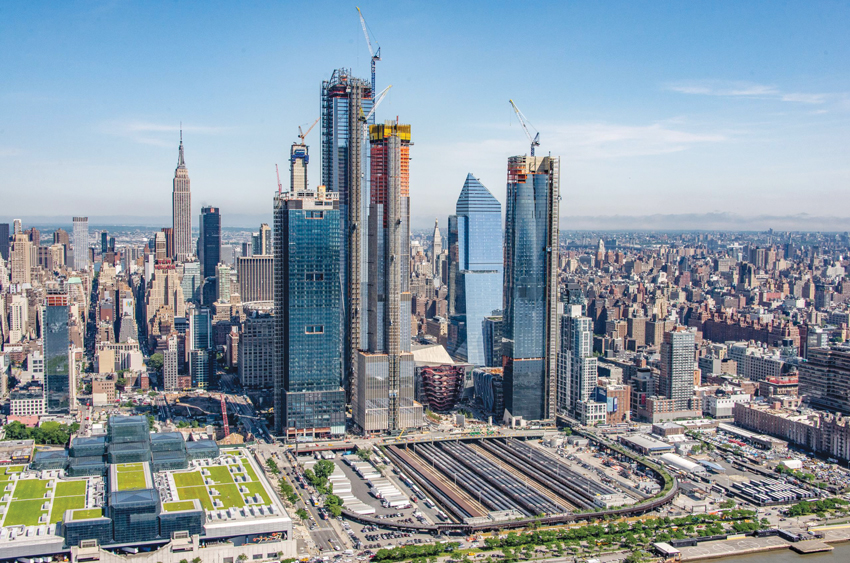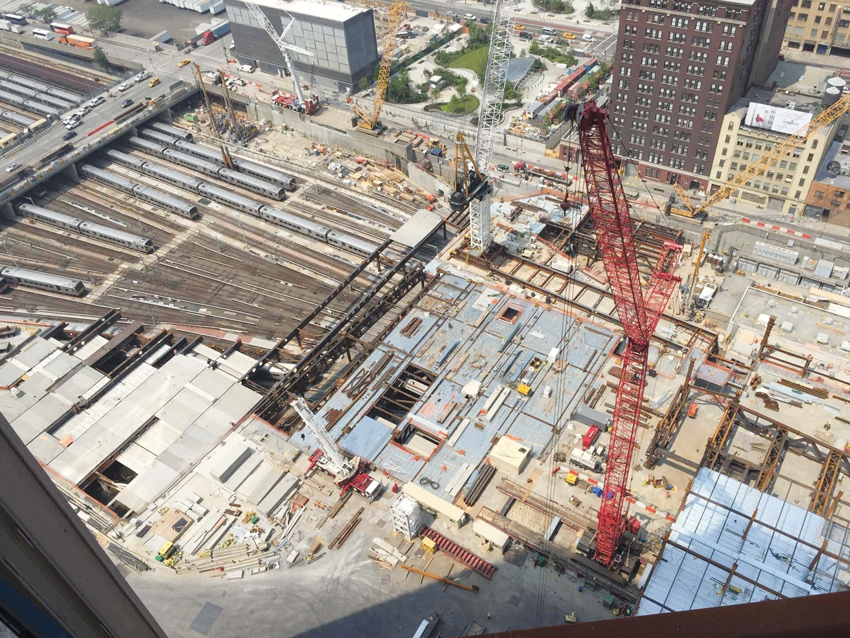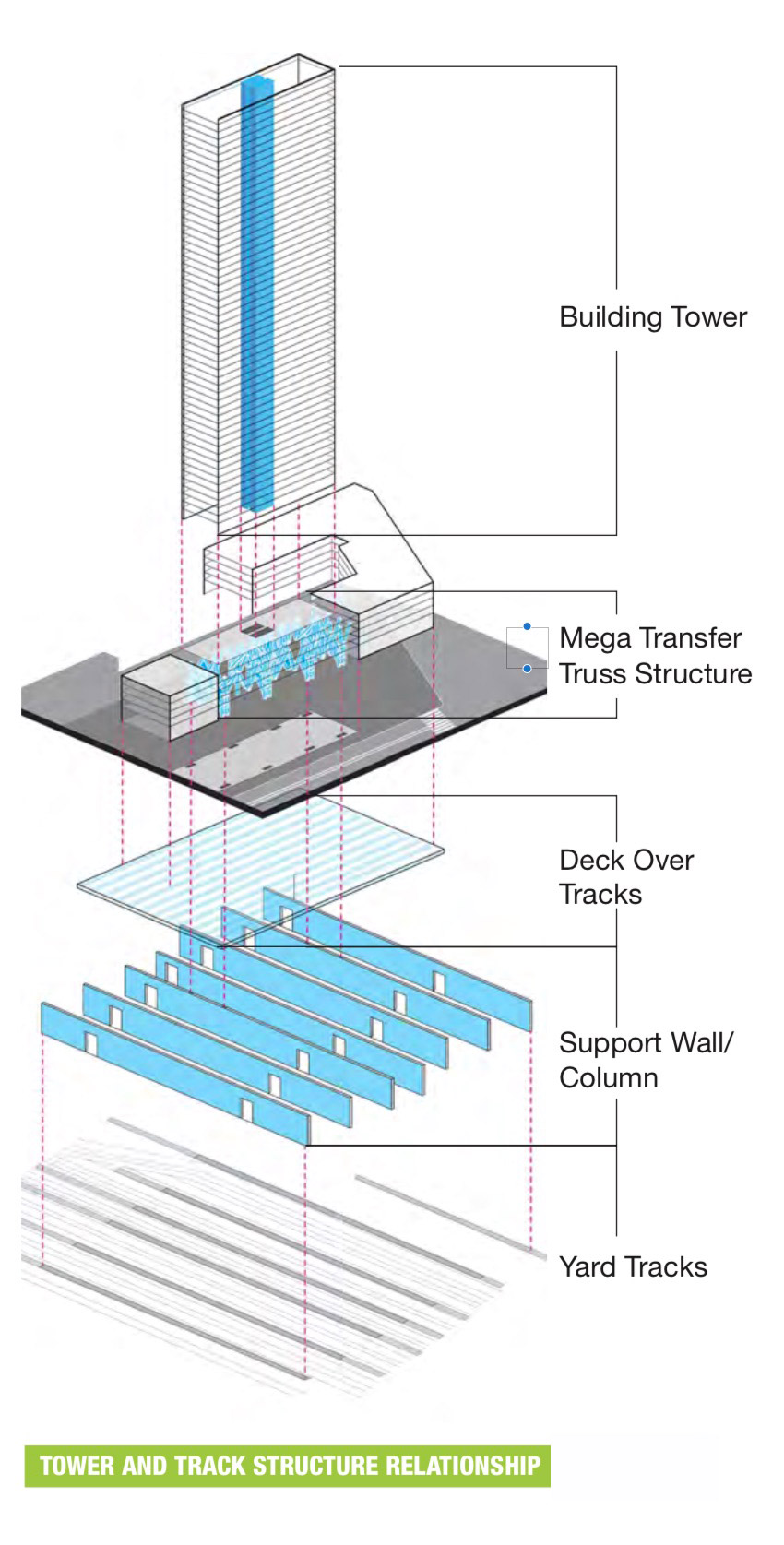Gaining Urban Space: Platforms Over Rail Yards
Learning Objectives:
- List the factors driving urban interest in developing new real estate on top of platforms covering rail yards and transportation corridors.
- Identify the numerous reasons that make structural steel the material of choice for building these platforms.
- Gather design and installation details about the columns, girders, trusses, and mega-transfer trusses that support the platforms.
- Review various details surrounding New York’s current Hudson Yards project and the Sunnyside Yard Feasibility Study.
- Discuss the complexities and high level of coordination required by these unique projects.
Credits:
This course is approved as a Structured Course
This course can be self-reported to the AANB, as per their CE Guidelines
Approved for structured learning
Approved for Core Learning
This course can be self-reported to the NLAA
Course may qualify for Learning Hours with NWTAA
Course eligible for OAA Learning Hours
This course is approved as a core course
This course can be self-reported for Learning Units to the Architectural Institute of British Columbia
As urban populations continue to surge, space-starved cities are seeking creative solutions to continue developing the commercial, institutional, and residential buildings vital to these metropolitan centers.

Photo courtesy of Hudson Yards New York/Related Oxford
By creating large platforms over rail yards, urban locales are now tapping into new spaces for building, as pictured here at Manhattan’s Hudson Yards.
To meet this growing need, technological advancements and economic feasibility are merging to support the amazing notion of constructing huge platforms over cities’ rail yards and transportation corridors. These several-acre platforms can then anchor new development in city centers.
A number of cities are already capitalizing on these ideally located air spaces—on the heels of New York’s Hudson Yards development, Philadelphia’s Schuykill Yards, Paris’ Rive Gauche, and several more sites have serious proposals and feasibility studies in the works.
“While developing platforms and infrastructure over active rail yards requires significant engineering and investment, it is a way to develop land in dense urban areas,” explains Eli Gottlieb, managing principal, Thornton Tomasetti, New York. “This can have multiple advantages, knitting back urban fabric that is currently cut by the transit infrastructure as well as capturing large footprints that may not be available on other sites.”
In a similar vein, Juan Estevez, vice president, AECOM Tishman, New York, says, “A great advantage of developing these large areas that have sat silently in what are now densely populated, prime locations is that it allows designers to create a space that is boundless from the usual urban constraints; to create a new city within a city.”
Consider New York City, for example. According to Chris Jones, senior vice president and chief planner for New York’s Regional Plan Association, urban revival has greatly increased the value of well-positioned property—particularly near transit hubs and where rail yards tend to be located—that can be converted to high-density, mixed-use development. “This mismatch of supply and demand is making it profitable to develop even costly and complicated projects.”
While New York’s rail yards were originally built at the city’s edges, there is now a large population living around the tracks, as is the case in many urban areas. As a result, real estate values are high enough to justify the expense of decking over, explains Jack Robbins, AIA, LEED AP, partner, director of urban design, FXCollaborative, New York.
With extremely limited undeveloped site locations, these railroad yards represent large parcels of untapped land.
Steel Anchors Platforms
To technologically enable these mega platforms, experts name structural steel as the material of choice due to its relatively lightweight, high-strength, large-spanning abilities and availability.
“The driving force for material selection for building around active tracks is to maximize the load capacity of the structure while minimizing disruption to the railroad,” explains Estevez. “Steel is certainly a stronger material and has the advantage of reducing the area taken up between tracks to support high-rise buildings above. Steel further has the advantage of the pieces being customizable offsite for a perfect fit that can be set quickly and minimize disruptions.”
A prime example is Hudson Yards, which will ultimately house more than 17 million square feet of commercial and residential space, a public school, and a luxury hotel on top of 30 active Long Island Rail Road train tracks, three Amtrak subsurface rail tunnels, and fourth Gateway tunnel. Here, steel columns were the only solution to meet the hefty column loads—as high as 51,000 kips service—that had to come down between the tracks with only 24 inches of width for clearance.
“By using 65 ksi steel plates laminated to form the full columns, the loads could be efficiently carried in the limited dimensions,” Gottlieb says. Furthermore, “spans range from 35 feet up to 155 feet with the large variety in spans and the grids that shift to the curve of the tracks and switches. Steel was a key material to provide this flexibility.”

Photo courtesy of Hudson Yards New York/George Butler
This aerial shot of Hudson Yards shows the massive platforms being constructed on top of Manhattan’s active rail yards.
While the concept of decking over has been around for a long time, technology is now making it a reality. For the Hudson Yards project, laminated steel columns were fabricated from layers of high-strength steel made from special steel plates manufactured in Europe.
And advances in construction technique (e.g., use of heavy crane equipment, special gantries, etc.) make erection of heavy and long structural members both possible and economical on the project, according to Yefim A. Gurevich, senior vice president, building structures, WSP, New York.
High-strength steels, such as A913 and A992 65 ksi material, were used for the columns and beams at Hudson Yards. This enabled a significant reduction in material use and more critically, a reduction in the pick weights for the cranes that allowed the project team to fabricate and set larger elements at larger reaches. “This maximized the ability to cover the yard quickly by reducing crane picks and reducing pick complexity,” Gottlieb says.
Robbins points out that today’s structural modeling programs make these designs much more efficient, particularly when dealing with irregular column grids and/or modeling with a time dimension, whether it’s looking at train traffic, pedestrian movement, or vehicular traffic.
Similarly, advanced BIM tools support a greater level of detail and coordination. “This also allows for tighter designs fitting all the required parts together as well as faster construction, as everyone knows how every piece will fit together from structure to MEP to final architectural elements,” Gottlieb says.
Meanwhile, Estevez praises BIM for its ability to clearly show how every trade and system interacts with the one another. “For New York City, our greatest cost is in field labor, so everything we can do to make that work on-site as safe and efficient as possible is a savings to the project,” he says.
Furthermore, with platform projects, decreasing or eliminating disruptions to the railroad is of utmost importance. “Preplanning and microplanning of activities associated with rail outage times in BIM provides crystal clarity to all parties and greatly decreases risk,” he adds.
The Structural Details
There are many complex details that go into designing and installing these massive platforms; the process begins with large caissons that are drilled into the ground.

Image courtesy of Sunnyside Yard Feasibility Study
A typical overbuild incorporates support walls/columns, a deck over the tracks, and a mega-transfer truss structure for buildings taller than five stories.
“While foundation selection is highly dependent on soil and rock conditions, large-diameter caissons with structural steel shafts inside will take up minimal space and provide enormous capacity for vertical loading,” Estevez explains.
When working within the confines of a rail yard, those foundations become limited by the available space between tracks to drill in those caissons. Similarly, the diameter of the foundation shafts is limited by the clearance between the rail tracks.
For Hudson Yards, “we used a 60-inch-diameter steel casing on the shafts,” Flynn says. “We placed a solid laminated steel core inside the casing and concrete between the casing and core.”
Each caissons’ capacity was maximized to limit the number of foundations that had to be installed. In some cases, 65 ksi steel cores, as previously mentioned, and built-up plate were used to support individual loads of as much as 25,000 kips service, according to Gottlieb.
Another issue was navigating between the rail utilities and other obstacles that came to the surface as construction progressed. For example, the team insisted that the site be pre-excavated in order to minimize surprises.
The project’s utility-relocation budget alone is estimated at $12 million. This includes altered structural designs for the frame of the platform to accommodate a new caisson location in order to avoid conflicts. In all, a total of 288 caissons, ranging from 4 to 5 feet in diameter and 20 to 80 feet in depth, support Hudson Yard’s Eastern Platform and structures overhead.















